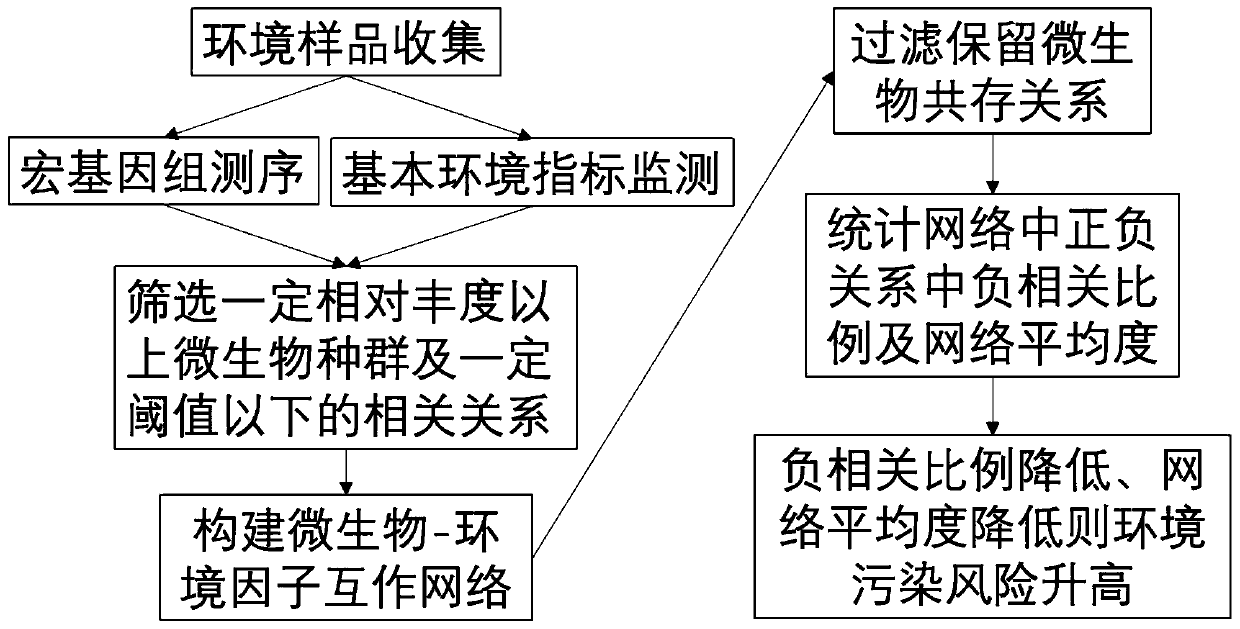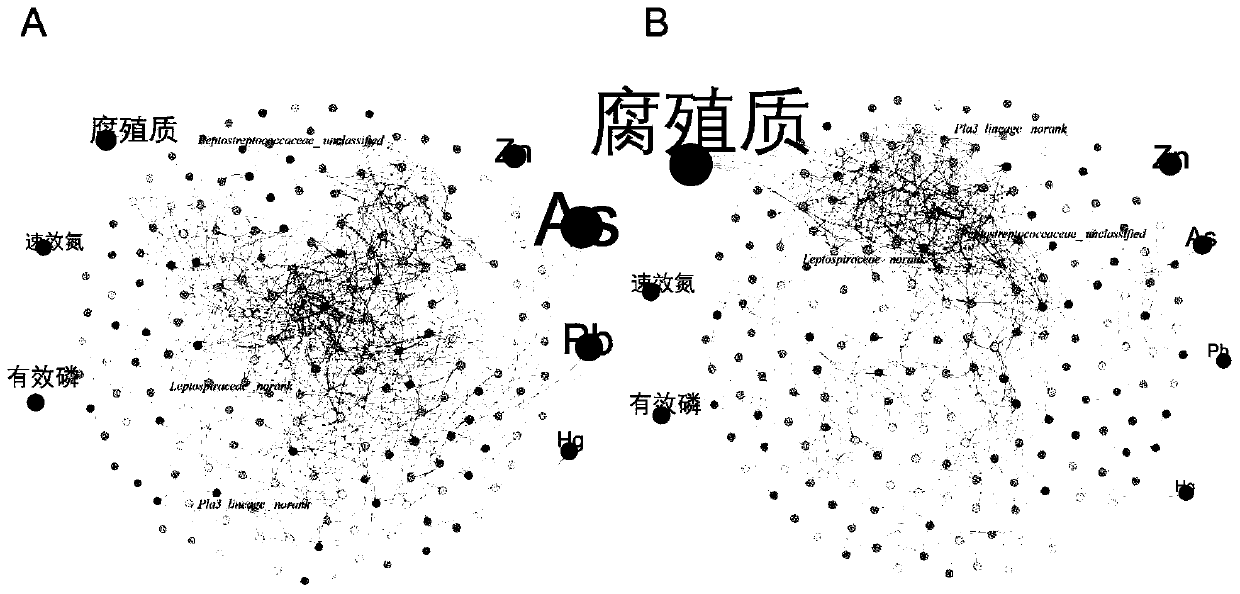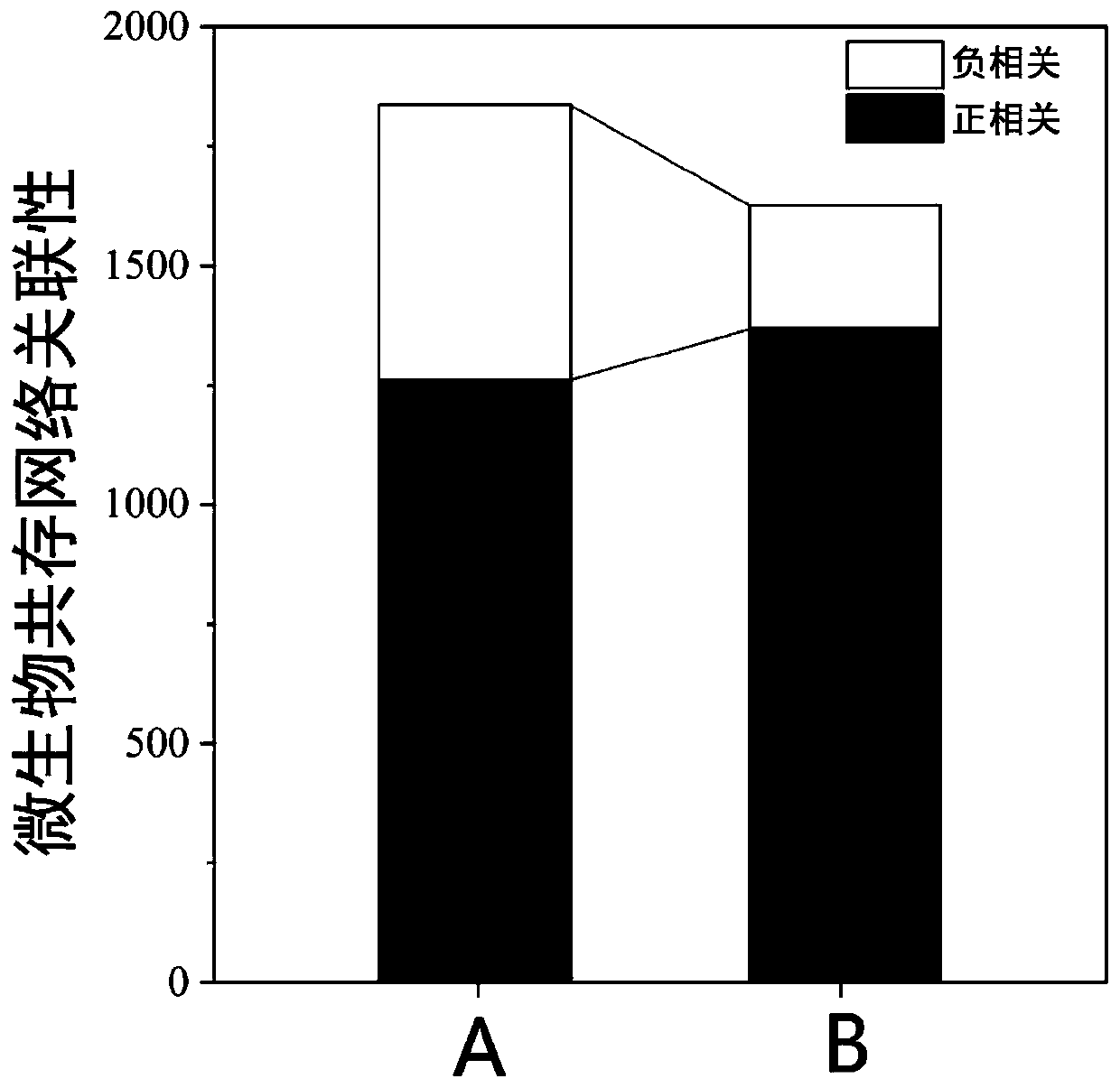Microbial network-based method for assessing risk of environmental pollution
A technology of network evaluation and microorganisms, applied in the fields of biological systems, bioinformatics, informatics, etc., can solve the problems of microorganisms that do not consider the influence of environmental factors, ignore the coexistence information of microorganisms, etc., and achieve the effect of accurate judgment
- Summary
- Abstract
- Description
- Claims
- Application Information
AI Technical Summary
Problems solved by technology
Method used
Image
Examples
Embodiment
[0023] Example: Bacterial community and basic environmental indicators in the sediment samples of the same river network
[0024] refer to figure 1 The flow chart is used to construct the interaction relationship between microorganisms and environmental factors, and compare the changes in the coexistence relationship of microorganisms to predict and verify the risk of environmental pollution. The specific operation steps are as follows:
[0025] Select 5 sampling points in the sediment of the same river in the middle reaches of a certain river for sampling, and measure the basic indicators of carbon, nitrogen and phosphorus and metal pollution indicators. The results show that the nitrogen and phosphorus indicators in the sediment samples are normal, and the metal and other indicators are not beyond the national pollution risk control standard. DNA was extracted from the sample using metagenomic sequencing, and a clustering table based on similarity was obtained through bioi...
PUM
 Login to View More
Login to View More Abstract
Description
Claims
Application Information
 Login to View More
Login to View More - R&D
- Intellectual Property
- Life Sciences
- Materials
- Tech Scout
- Unparalleled Data Quality
- Higher Quality Content
- 60% Fewer Hallucinations
Browse by: Latest US Patents, China's latest patents, Technical Efficacy Thesaurus, Application Domain, Technology Topic, Popular Technical Reports.
© 2025 PatSnap. All rights reserved.Legal|Privacy policy|Modern Slavery Act Transparency Statement|Sitemap|About US| Contact US: help@patsnap.com



